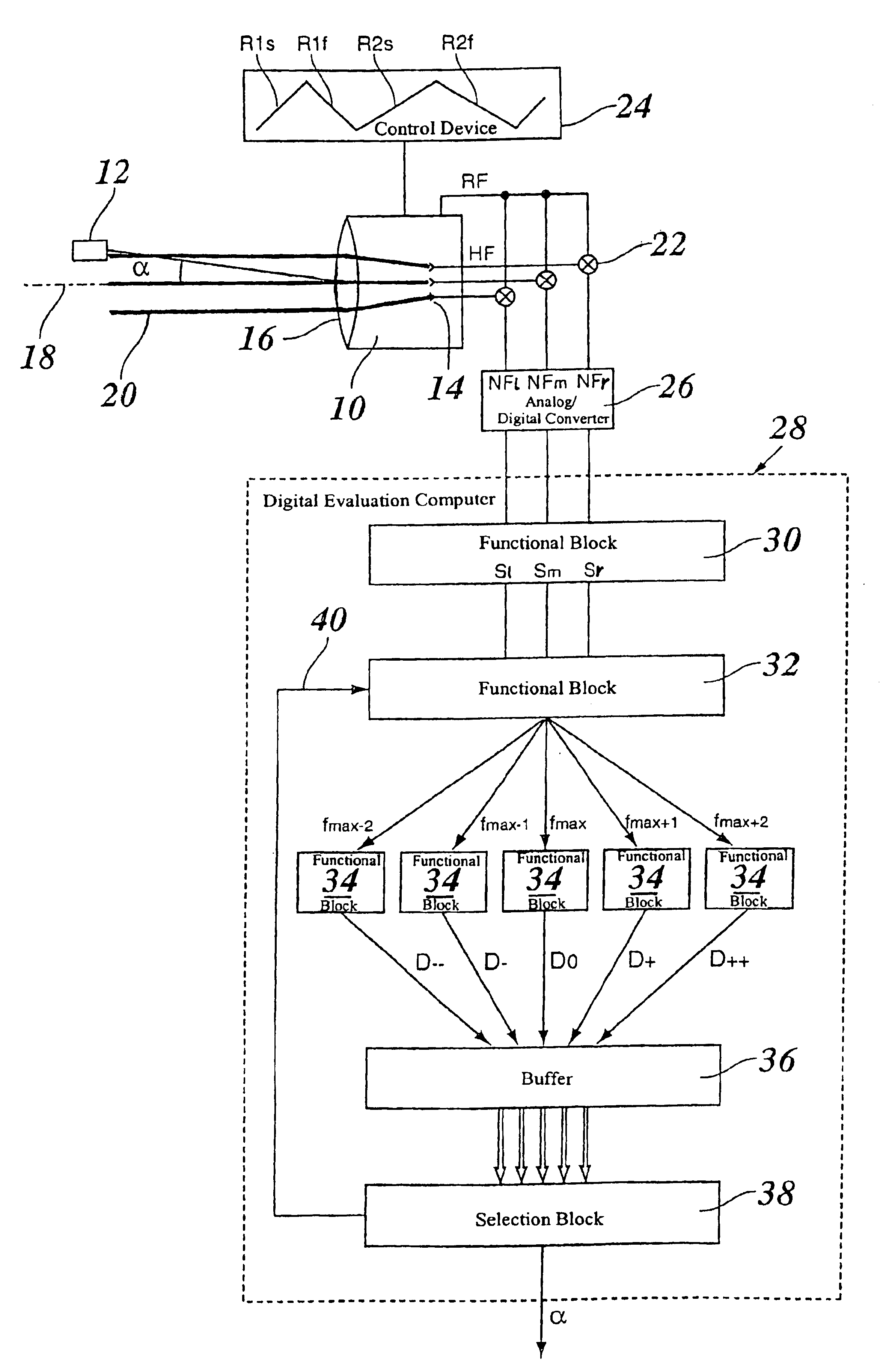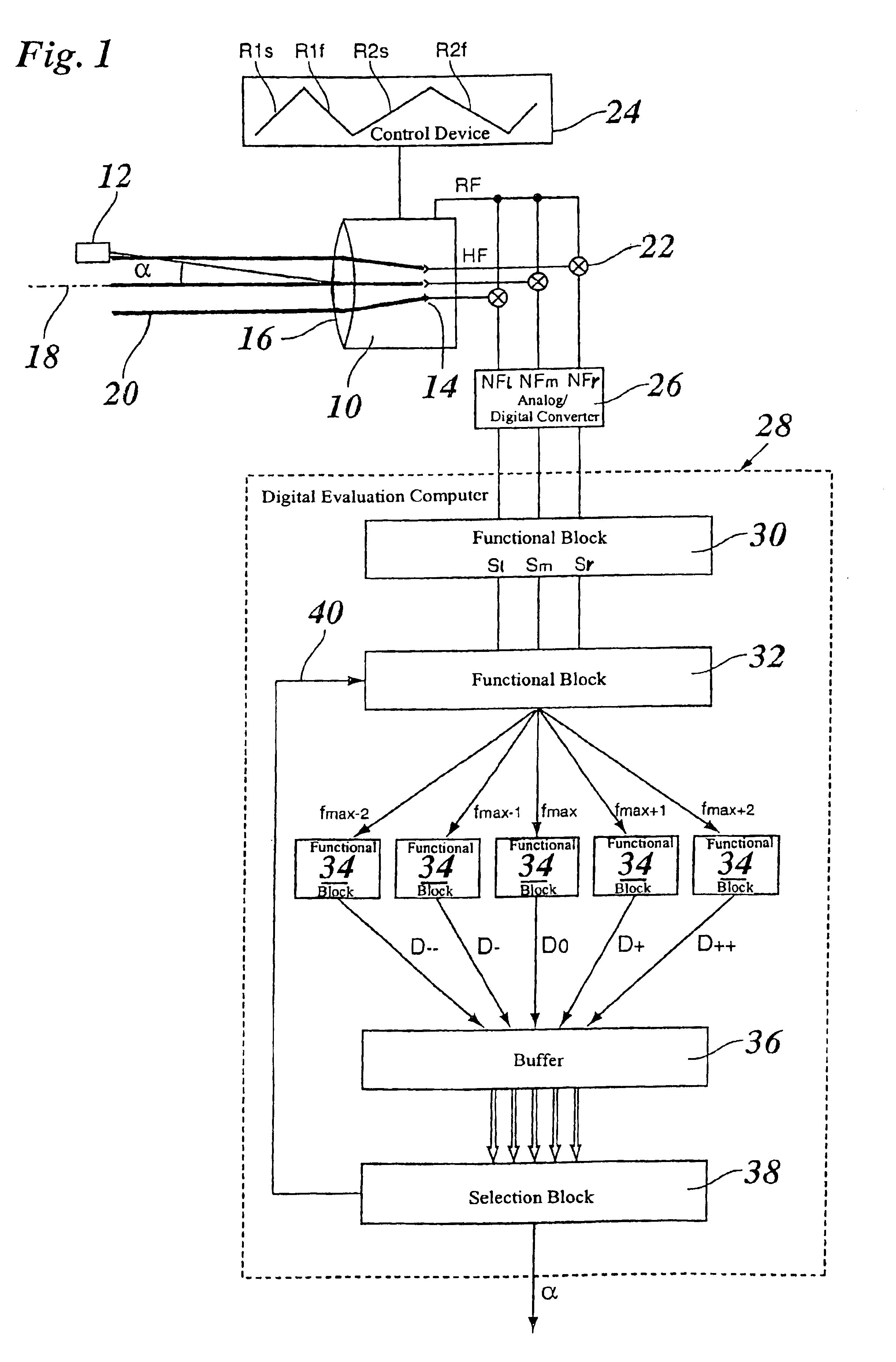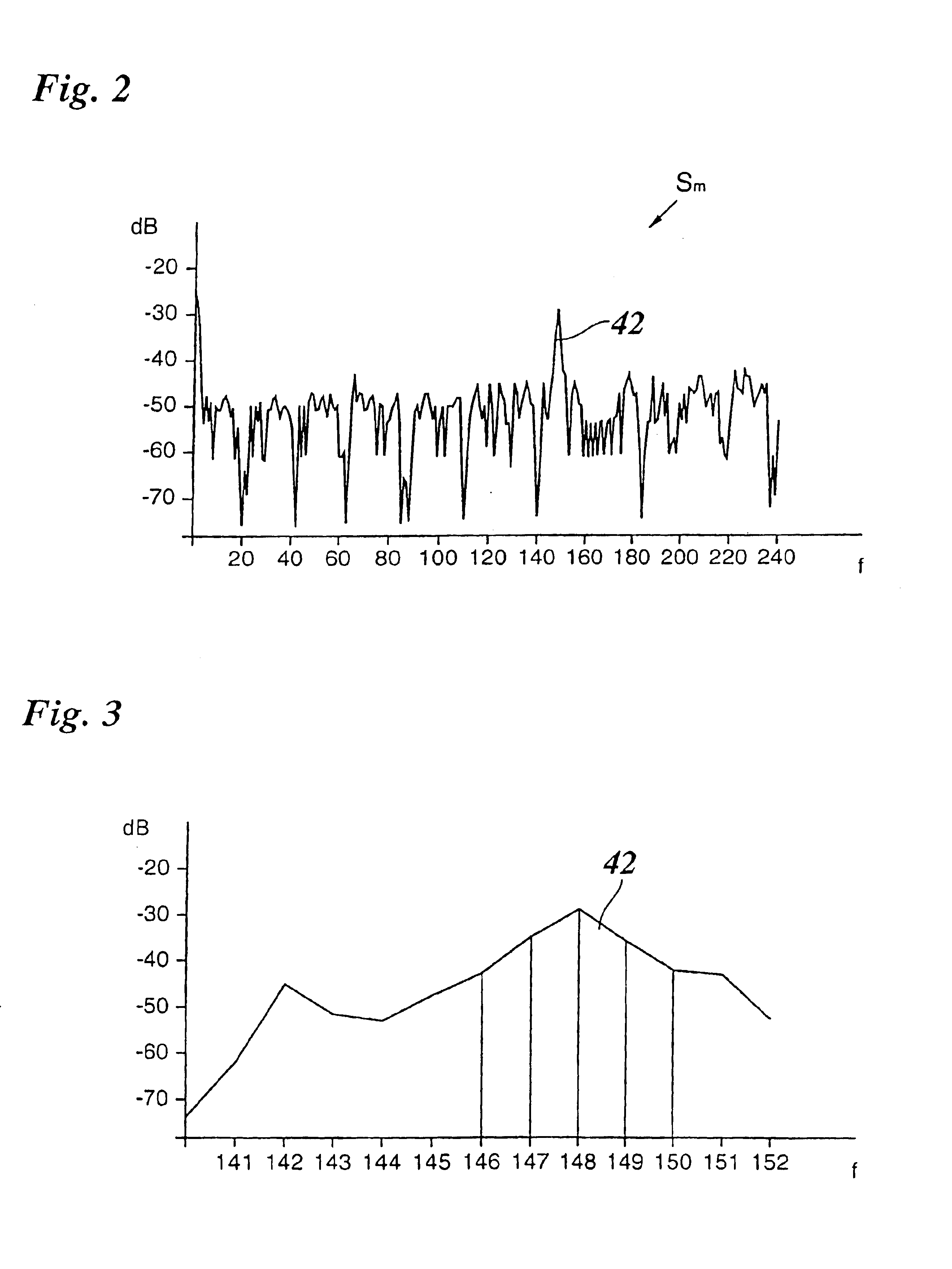Method and radar system for determining the directional angle of radar objects
- Summary
- Abstract
- Description
- Claims
- Application Information
AI Technical Summary
Benefits of technology
Problems solved by technology
Method used
Image
Examples
Embodiment Construction
FIG. 1 schematically depicts a radar sensor of a multibeam radar 10, which is installed on the front-end section of a motor vehicle and is used for finding the position of radar objects 12 located ahead of the vehicle. Multibeam radar 10, has three transmitting and receiving elements 14, referred to in the following, in short, as receiving elements, of which one is situated on optical axis 18 defined by an optical system 16 of the radar sensor, while the two others are configured so as to be laterally offset from the optical axis. In this manner, three measuring beams 20 are produced, which are emitted at different angles with respect to the optical axis. In practice, measuring beams 20 shown in the drawing only as lines, have the form of radar lobes which extend over relatively large, overlapping angular ranges. The lines in FIG. 1 indicate the direction of each intensity maximum of these radar lobes.
Radar object 12 is generally hit by all three radar lobes, and, for each measuring...
PUM
 Login to View More
Login to View More Abstract
Description
Claims
Application Information
 Login to View More
Login to View More - R&D
- Intellectual Property
- Life Sciences
- Materials
- Tech Scout
- Unparalleled Data Quality
- Higher Quality Content
- 60% Fewer Hallucinations
Browse by: Latest US Patents, China's latest patents, Technical Efficacy Thesaurus, Application Domain, Technology Topic, Popular Technical Reports.
© 2025 PatSnap. All rights reserved.Legal|Privacy policy|Modern Slavery Act Transparency Statement|Sitemap|About US| Contact US: help@patsnap.com



